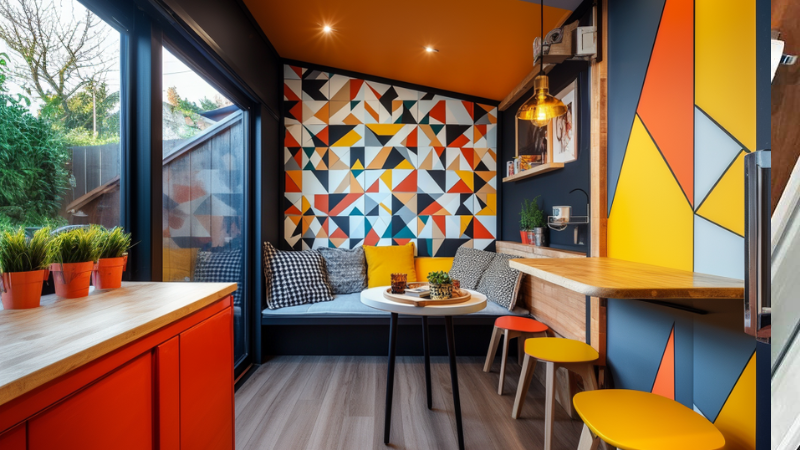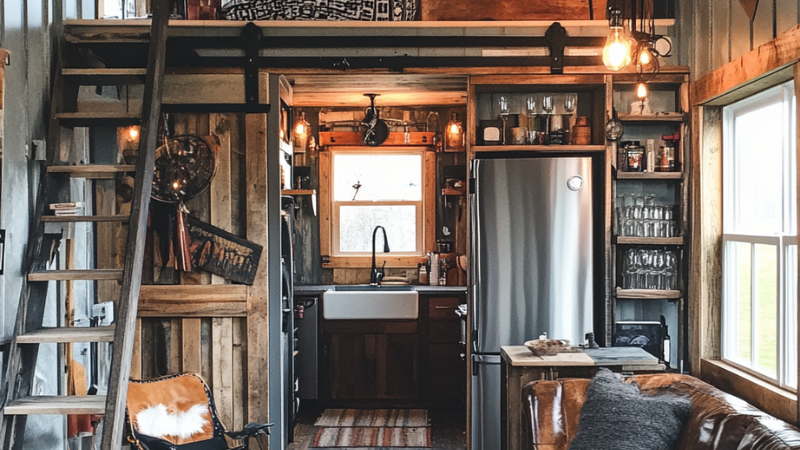The tiny house movement is more than just a trend, it’s a lifestyle revolution that’s inspiring people around the world to rethink what "home" really means. Tiny homes promise simplicity, sustainability, and a chance to focus on what truly matters. But let’s be real: not every design decision in the tiny house world is a winner. Interior designers are spilling the tea on some popular trends, and their insights are as eye-opening as they are practical.
Take barn doors, for example. Sure, they’re the wow factor of some tiny house enthusiasts, praised for their space-saving charm. But let’s face it, they’re everywhere. Overusing them can make your space look like it’s auditioning for a farmhouse-themed reality show. “While barn doors are practical, they often clash with modern or minimalist interiors,” says interior designer Sophie Patel. “Pocket doors or sleek sliding panels offer the same functionality without feeling overdone.”
And then there’s the accent wall craze. Who doesn’t love a bold, statement-making mural or some eye-catching wallpaper? But in a tiny house, it’s easy to cross the line from stylish to sensory overload. “The key is balance,” advises designer Liam Hart. “A stunning accent wall can be the star of the show, but it needs a supporting cast of neutral tones to keep the space feeling calm and cohesive.”
Speaking of trends that can go overboard, let’s talk industrial vibes. Exposed pipes and Edison bulbs have their charm, but too much industrial can make your tiny house feel more like a warehouse than a warm, inviting home. “There’s a fine line between chic and overbearing,” explains designer Emily Ross. “Blending industrial elements with softer textures and natural materials can create a space that’s both edgy and cosy.”
Now, let’s get real about those "Pinterest-perfect" designs. Floating shelves, anyone? They look amazing in photos, but in the real world of tiny living, they often sacrifice precious storage space. “Floating shelves are a classic case of form over function,” says Patel. “In a tiny house, every inch matters, and you need storage solutions that work as hard as they look good.”
Minimalism is another cornerstone of tiny living, but going too minimal can leave your space feeling more sterile than serene. “A home, no matter the size, should reflect your personality,” says Hart. “Add some flair with artwork, a few plants, or a cosy throw blanket. It’s those little touches that make a tiny house feel like a big deal.”
And let’s not forget functionality. In a tiny house, multitasking furniture is your best friend. “A well-designed pull-out couch or a hidden dining table can make a significant difference in usability without sacrificing style,” says Ross. “Custom furniture that maximises space is often worth the investment.”
Here’s the bottom line: trends are fun, but your tiny house should be as unique as you are. “A timeless design sprinkled with a few trendy touches will always outshine a space that tries too hard to be ‘in,’” says Patel. Interior designers agree: the best tiny homes blend form and function in a way that feels personal and authentic.
The tiny house movement is all about embracing innovation and community, and there’s so much to celebrate. Yes, there are challenges, designing small spaces is no easy feat. But with creativity, intention, and a dash of personality, your tiny house can be a masterpiece that’s both stylish and liveable. After all, good design isn’t just about how a space looks, it’s about how it makes you feel. And when you get it right, there’s nothing tacky about that.



